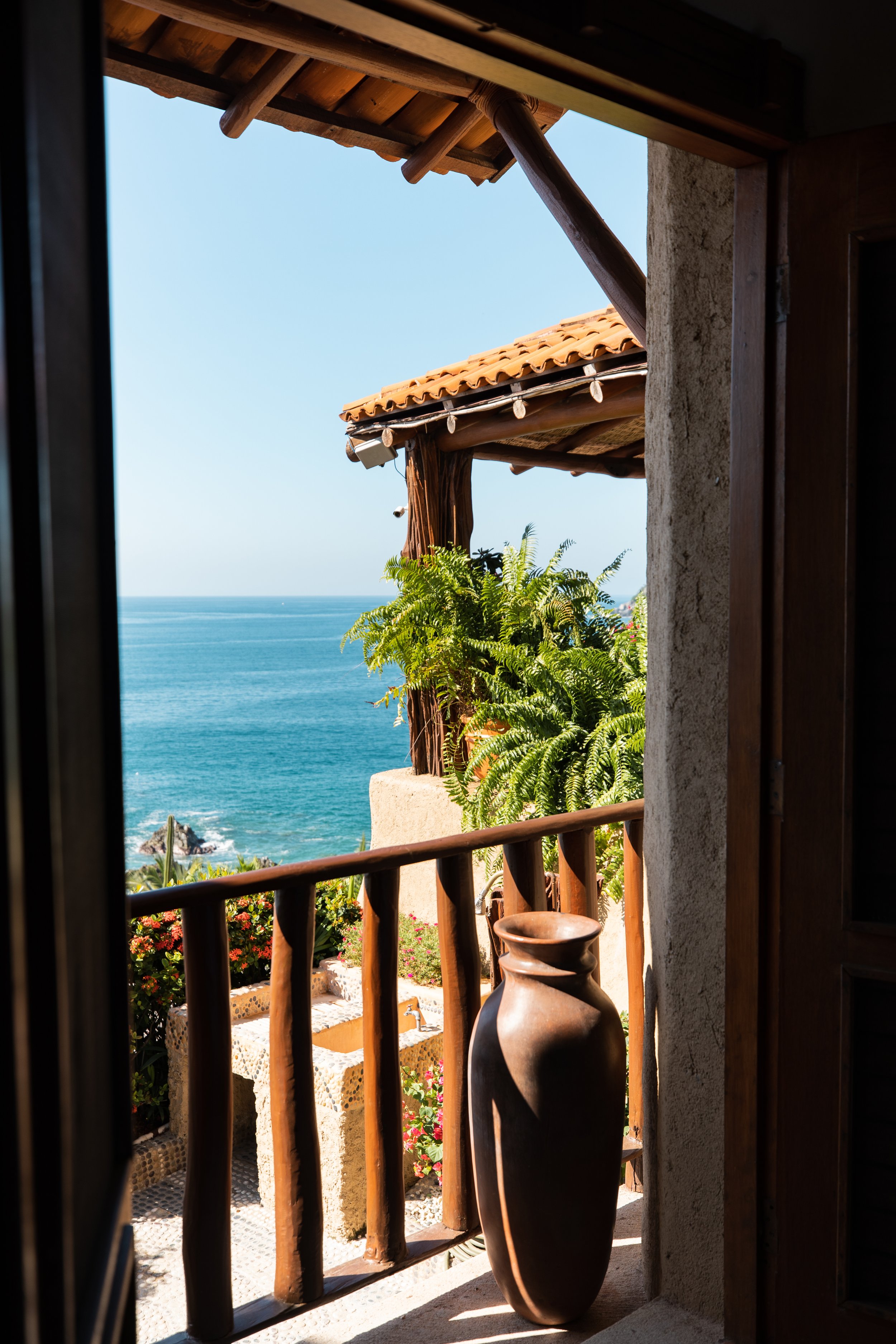



The House
Maria Bonita appears to have been designed with a profound passion for its surroundings—the beautiful bay it overlooks, the ever-changing sunsets, and the tranquil Playa La Ropa sprawling at its feet. Elements like the locally sourced wood embedded into the flooring, alongside river stones creating stunning natural rugs, exemplify this sentiment perfectly. You read it right: pieces of local timber are intricately embedded into the floor to form a spectacular rug.
The immense interior Palapa roof, crafted from materials gathered from nearby mangroves and meticulously hand-processed by local artisans, serves as both insulation and a cooling canopy. Just imagine the time spent harvesting mangrove materials by hand, the painstaking process of handcrafting them into a smooth finish ready to provide cooling relief. Everywhere you look, perfectly aligned river stones catch your eye—each one meticulously chosen and placed by hand with such precision that you can't help but admire and appreciate the beautiful craftsmanship and effort of Mexican hands, following the orchestration of their Architect. This essay highlights Maria Bonita's intricate details and craftsmanship, emphasizing its integration with the natural environment and the meticulous efforts of local artisans.
Zihuatanejo: Beyond Sun and Sand
Zihuatanejo,
located on the Pacific coast of Mexico in Guerrero state, has a rich history dating back to pre-Hispanic times. Before the arrival of the Spanish, the region was inhabited by indigenous groups such as the purépechas and cuitlatecos.
Zihuatanejo, known as “Cihuatlán” in Nahuatl, served as a significant trading port where various Mesoamerican cultures exchanged goods like cacao and ceramics.
The Spanish conquest in the early 16th century, led by Hernán Cortés, brought profound changes to Zihuatanejo. It resulted in political, social, and economic transformations as Spanish governance was imposed, accompanied by religious conversion and cultural assimilation. The indigenous population experienced labor exploitation under the Spanish regime, and their traditional customs and languages were influenced by European practices.
Despite these changes, the pre-Hispanic history of Zihuatanejo remains evident in archaeological remains and cultural practices that reflect the region’s vibrant past. The conquest era marked a pivotal moment in shaping Zihuatanejo’s identity, contributing to the development of a unique mestizo culture that persists in modern-day Mexico.
This summary encapsulates the dynamic interplay between indigenous heritage and Spanish colonization that defined Zihuatanejo’s historical evolution.

